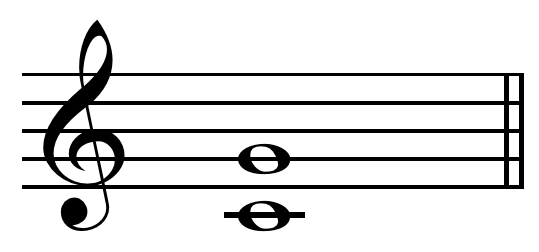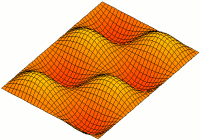|
─É├Ān G├Īo
The ─æ├Ān g├Īo (chß╗» N├┤m: ÕĮłŻéŗ) ("coconut shell fiddle") is a bowed string instrument, a part of the traditional Vietnamese orchestra. It is similar to the ─æ├Ān hß╗ō. The instrument originated from South Viet Nam, and is used in entertainment contexts. It can be played alone, as part of an orchestra, or to accompany cß║Żi lŲ░ŲĪng (Vietnamese folk opera). The instrumentŌĆÖs name can be broken down as ŌĆ£─æ├ĀnŌĆØ meaning string instrument, and ŌĆ£g├ĪoŌĆØ literally translated as an aged coconut shell used as a scooper. The ─æ├Ān g├Īo is most closely related to the fiddle in Anglo-American culture, and the yehu and banhu in Chinese culture. Construction and design The resonator of the ─æ├Ān g├Īo is the coconut shell covered by leather. The neck extends from the coconut shell without frets. The head of the neck bends back and offers string adjusters. There are only two strings for this instrument, and the material is silk, which today can also be substituted with met ... [...More Info...] [...Related Items...] OR: [Wikipedia] [Google] [Baidu] |
Banhu
The ''banhu'' () is a Chinese traditional bowed string instrument in the huqin family of instruments. It is used primarily in northern China. ''Ban'' means a piece of wood and ''hu'' is short for ''huqin''. Like the more familiar ''erhu'' and '' gaohu'', the ''banhu'' has two strings, is held vertically, and the bow hair passes in between the two strings. The ''banhu'' differs in construction from the erhu in that its soundbox is generally made from a coconut shell rather than wood, and instead of a snakeskin that is commonly used to cover the faces of ''huqin'' instruments, the ''banhu'' uses a thin wooden board. The ''banhu'' is sometimes also called "banghu," because it is often used in ''bangzi'' opera of northern China, such as Qinqiang from Shaanxi province. The '' yehu'', another type of Chinese fiddle with a coconut body and wooden face, is used primarily in southern China. External links Listening Banhu MP3s(click on headphones to listen to individual tracks) ... [...More Info...] [...Related Items...] OR: [Wikipedia] [Google] [Baidu] |
Bowed Instruments
Bowed string instruments are a subcategory of string instruments that are played by a bow rubbing the strings. The bow rubbing the string causes vibration which the instrument emits as sound. Despite the numerous specialist studies devoted to the origin of bowing, the origin of bowing remains unknown.Friedrich Behn, Musikleben im Altertum und fr├╝hen page 159 List of bowed string instruments Violin family * Cello (violoncello) * Pochette * Viola (altviol, bratsche) * Violin (violino) * Double bass (contrabasso) ;Variants on the standard members of the violin family include: * Baroque violin * Cello da spalla * Five string violin * Hardanger fiddle * Kit violin * Kontra * L├źtfiol * Lira da braccio * Octobass * Sardino * Stroh violin * Tenor violin Viol family (Viola da Gamba family) * Alto viol * Bass viol * Tenor viol * Treble viol ;Variants on the standard four members of the viol family include * Baryton * Division viol * Lirone * Lyra ... [...More Info...] [...Related Items...] OR: [Wikipedia] [Google] [Baidu] |
Vietnamese Musical Instruments
Traditional Vietnamese musical instruments are the musical instruments used in the traditional and classical musics of Vietnam Vietnam, officially the Socialist Republic of Vietnam (SRV), is a country at the eastern edge of mainland Southeast Asia, with an area of about and a population of over 100 million, making it the world's List of countries and depende .... They comprise a wide range of string, wind, and percussion instruments, used by both the Vietnamese people, Viet () majority as well as the nation's List of ethnic groups in Vietnam, ethnic minorities. Strings Plucked * - monochord zither: often tuned C3, though tuning varies * - long-necked three-stringed lute with trapezoidal body: tuned G3 C4 * (also called , or ) - moon-shaped two-string lute: no fixed tuning; strings are tuned a 4th, 5th, or 7th (minor), derived from the Chinese * - two-string lute derived from the Chinese *''─É├Ān tam'' - fretless lute derived from the Chinese with snakeskin-cove ... [...More Info...] [...Related Items...] OR: [Wikipedia] [Google] [Baidu] |
Music Of Vietnam
Traditional Vietnamese music encompasses a large umbrella of Vietnamese music from antiquity to present times, and can also encompass multiple groups, such as those from Vietnam's ethnic minority tribes. History Traditional Vietnamese music has been mainly used for religious activities, in daily life, and in traditional festivals. The music is considerably diverse due to Vietnam's ethnic population. Moreover, each of Vietnam's ethnic groups owns many unique types of musical instruments. The influence of Asian musical cultures on Vietnamese music can be seen in particular instruments such as the flutes, zithers, harps, and erhu. However, the recovery of an almost complete stringed instrument from a deer antler dated to 2,000 years old and shows clear similarities with traditional Vietnamese musical instruments indicate that these traditional instruments have ancient origins. Influences on Vietnam music The traditional music of Vietnam has been heavily influenced by Chinese mus ... [...More Info...] [...Related Items...] OR: [Wikipedia] [Google] [Baidu] |
Cß║Żi LŲ░ŲĪng
''Tuß╗ōng cß║Żi lŲ░ŲĪng'' (, H├Īn-N├┤m: Պ׵ö╣Ķē») often referred to as ''Cß║Żi lŲ░ŲĪng'' (Chß╗» H├Īn: µö╣Ķē»), roughly "reformed theater") is a form of modern folk opera in Vietnam. It blends southern Vietnamese folk songs, classical music, ''h├Īt tuß╗ōng'' (a classical theatre form based on Chinese opera), and modern spoken drama. History and description ''Cß║Żi lŲ░ŲĪng'' originated in Southern Vietnam in the early 20th century and blossomed in the 1930s as a theatre of the middle class during the country's French Indochina, French colonial period. ''Cß║Żi lŲ░ŲĪng'' is now promoted as a national theatrical form. Unlike the other folk forms, it continued to prove popular with the masses as late as the 1970s and the 1980s, although it is now in decline. Beyond remedy for Cai luong. VietNamNet Bridge. 21 August 2008 ''Cß║Żi lŲ░ŲĪng'' can be compared to a sort of play with the added aspect of Vß╗Źng cß╗Ģ. This term literally means "nostalgia for the past", it is a special type o ... [...More Info...] [...Related Items...] OR: [Wikipedia] [Google] [Baidu] |
Perfect Fifth
In music theory, a perfect fifth is the Interval (music), musical interval corresponding to a pair of pitch (music), pitches with a frequency ratio of 3:2, or very nearly so. In classical music from Western culture, a fifth is the interval from the first to the last of the first five consecutive Musical note, notes in a diatonic scale. The perfect fifth (often abbreviated P5) spans seven semitones, while the Tritone, diminished fifth spans six and the augmented fifth spans eight semitones. For example, the interval from C to G is a perfect fifth, as the note G lies seven semitones above C. The perfect fifth may be derived from the Harmonic series (music), harmonic series as the interval between the second and third harmonics. In a diatonic scale, the dominant (music), dominant note is a perfect fifth above the tonic (music), tonic note. The perfect fifth is more consonance and dissonance, consonant, or stable, than any other interval except the unison and the octave. It occu ... [...More Info...] [...Related Items...] OR: [Wikipedia] [Google] [Baidu] |
Interval (music)
In music theory, an interval is a difference in pitch between two sounds. An interval may be described as horizontal, linear, or melodic if it refers to successively sounding tones, such as two adjacent pitches in a melody, and vertical or harmonic if it pertains to simultaneously sounding tones, such as in a chord. In Western music, intervals are most commonly differences between notes of a diatonic scale. Intervals between successive notes of a scale are also known as scale steps. The smallest of these intervals is a semitone. Intervals smaller than a semitone are called microtones. They can be formed using the notes of various kinds of non-diatonic scales. Some of the very smallest ones are called commas, and describe small discrepancies, observed in some tuning systems, between enharmonically equivalent notes such as C and D. Intervals can be arbitrarily small, and even imperceptible to the human ear. In physical terms, an interval is the ratio between two sonic fr ... [...More Info...] [...Related Items...] OR: [Wikipedia] [Google] [Baidu] |
Frets
A fret is any of the thin strips of material, usually metal wire, inserted laterally at specific positions along the Neck (music), neck or Fingerboard, fretboard of a stringed instrument. Frets usually extend across the full width of the Neck (music), neck. On some historical instruments and non-European instruments, frets are made of pieces of string tied around the neck. Frets divide the neck into fixed segments at intervals related to a musical framework. On instruments such as guitars, each fret represents one semitone in the standard western system, in which one octave is divided into twelve semitones. ''Fret'' is often used as a verb, meaning simply "to press down the string behind a fret". ''Fretting'' often refers to the frets and/or their system of placement. Explanation Pressing the string against the fret reduces the Oscillation, vibrating length of the string to that between the bridge (instrument), bridge and the next fret between the fretting finger and the br ... [...More Info...] [...Related Items...] OR: [Wikipedia] [Google] [Baidu] |
Resonator
A resonator is a device or system that exhibits resonance or resonant behavior. That is, it naturally oscillates with greater amplitude at some frequencies, called resonant frequencies, than at other frequencies. The oscillations in a resonator can be either electromagnetic or mechanical (including acoustic). Resonators are used to either generate waves of specific frequencies or to select specific frequencies from a signal. Musical instruments use acoustic resonators that produce sound waves of specific tones. Another example is quartz crystals used in electronic devices such as radio transmitters and quartz watches to produce oscillations of very precise frequency. A cavity resonator is one in which waves exist in a hollow space inside the device. In electronics and radio, microwave cavities consisting of hollow metal boxes are used in microwave transmitters, receivers and test equipment to control frequency, in place of the tuned circuits which are used at lowe ... [...More Info...] [...Related Items...] OR: [Wikipedia] [Google] [Baidu] |
Yehu
The ''yehu'' () is a bowed string instrument in the '' huqin'' family of Chinese musical instruments. ''Ye'' means coconut and ''hu'' is short for ''huqin''. It is used particularly in the southern coastal provinces of China and in Taiwan. The instrument's soundbox is made from a coconut shell, which is cut on the playing end and covered with a piece of coconut wood instead of the snakeskin commonly used on other ''huqin'' instruments such as the '' erhu'' or '' gaohu''. As with most ''huqin'' the bow hair passes in between the two strings. Many players prefer to use silk strings rather than the more modern steel strings generally used for the ''erhu'', giving the instrument a distinctly hollow, throaty timbre. The instrument comes in various sizes. In Chaozhou music (where it is called ''pahi'', ÕåćÕ╝”) it is a leading instrument, and is tuned quite high. In Cantonese music it can be quite large and is often tuned to a relatively low pitch, lower than the ''erhu'' (usually ... [...More Info...] [...Related Items...] OR: [Wikipedia] [Google] [Baidu] |




